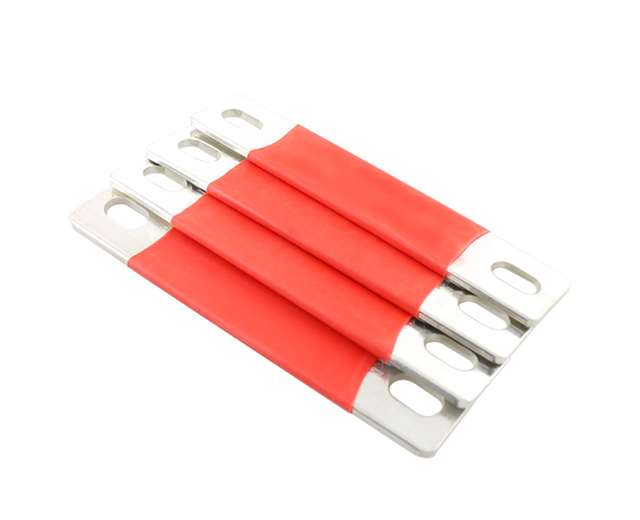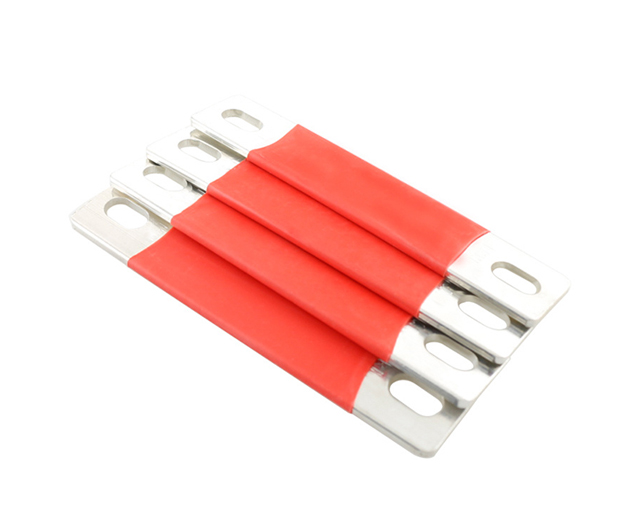

 1. What Is A Battery Busbar Copper?
1. What Is A Battery Busbar Copper?Battery Busbar Copper, also called Copper Busbar for Battery Pack, is a flat or shaped copper conductor used to connect battery cells and ensure high-efficiency current flow between them. These busbars are commonly applied in EV battery packs, energy storage systems (ESS), and lithium-ion battery modules.
A Battery Bus Bar Connections provides low-resistance, high-current connections and plays a critical role in battery performance, thermal management, and safety. They are often tin-plated or silver-plated and come in custom lengths, shapes, and punching patterns to match specific battery configurations.
The manufacturing of battery Copper Busbars involves advanced processing to ensure electrical reliability and mechanical compatibility:
Material Selection: Use of C11000, T2, or OFC (Oxygen-Free Copper) with ≥99.9% purity.
Cutting and Shaping: High-precision CNC machines cut the copper into the required size, thickness, and shape.
Punching/Drilling: Mounting holes, slots, or tabs are added for exact alignment with battery terminals.
Plating Treatment: Tin plating improves corrosion resistance and solderability; silver plating is used for critical conductivity applications.
Insulation Coating (Optional): PVC, PE, or heat-shrink sleeves can be added to provide electrical insulation.
Laser Marking/Labeling: Optional for traceability and identification.
Battery busbar copper is a key component across a range of industries that depend on modular battery systems. Typical applications include:
EV Battery Busbar Modules (Cylindrical, Prismatic, Pouch Cells)
Lithium-ion Battery Packs
Energy Storage Systems (ESS)
Battery Management Systems (BMS)
Solar Inverter Battery Packs
Powerwall and Residential Battery Units
Electric Scooters, Bikes, and Forklifts
Telecom and UPS Backup Battery Cabinets
Battery Racks for Industrial Use
Battery copper busbars are engineered for performance, precision, and reliability. Key characteristics include:
High Electrical Conductivity (≥99.9% pure copper)
Excellent Thermal Performance
Low Contact Resistance
Custom Punching and CNC Machining
Anti-Corrosion Plating (Tin/Silver)
Optional Insulation Coating
Stable Mechanical Strength
RoHS and UL Compliance
When designing a Battery Bus Bar Connections, several technical factors must be considered:
Current Load: Calculate max current per connection; adjust copper thickness and width accordingly.
Voltage & Insulation: Determine if insulation or spacing is needed between adjacent busbars.
Cell Layout: Design the busbar shape to match the terminal placement (e.g., tab alignment in prismatic cells).
Plating Choice: Tin plating for standard applications; silver plating for ultra-low resistance needs.
Thermal Rise: Ensure sufficient surface area for heat dissipation or add thermal pads if required.
Battery copper busbars are typically installed during module assembly using these steps:
Align Punching Holes with cell tabs or terminals.
Secure Busbars using screws, rivets, or laser welding.
Check for Clearance between positive and negative busbars to avoid shorts.
Apply Insulation if required using sleeves or covers.
Verify Contact Resistance after tightening.
Installation must be precise, as poor busbar alignment or loose contact can cause thermal damage or power loss.
G and N Fortune Limited offers end-to-end copper busbar solutions for battery packs. Why do leading manufacturers choose us?
OEM & ODM Support – Full customization of size, shape, plating, holes, and insulation.
High Purity Copper – T2, C11000, OFC materials with ≥99.9% conductivity.
Advanced CNC & Laser Equipment – Ensures precision and fast prototyping.
Diverse Applications – From EVs and ESS to telecom and solar battery systems.
Quick Turnaround & Global Delivery – Fast shipping for both prototypes and bulk orders.
RoHS, CE & UL Certified – International quality compliance for peace of mind.
| Parameter | Specification |
|---|---|
| Material | T2 / C11000 / OFC Copper (≥99.9% purity) |
| Busbar Type | Flat / Laminated / Flexible / Insulated |
| Thickness Range | 0.5mm – 5mm |
| Width Range | 5mm – 50mm |
| Length | Custom (up to 1000mm) |
| Surface Treatment | Tin Plated / Silver Plated / Bare |
| Insulation (Optional) | PVC, PE, Heat Shrink Sleeve |
| Tolerance | ±0.05mm |
| Punching | CNC Machined / Custom Hole Layouts |
| Compliance | RoHS, CE, UL |
| Application | EV, ESS, UPS, BMS, Lithium Battery |
Q1: What is a Battery Busbar Copper?
A: It is a high-conductivity copper connector used to link battery cells in packs, enabling efficient current flow and ensuring safety and performance.
Q2: What materials are used in battery copper busbars?
A: We use high-purity T2, C11000, or oxygen-free copper (≥99.9%), with optional tin or silver plating for corrosion resistance.
Q3: Can I customize the shape and size of the battery busbar?
A: Yes, G and N Fortune supports full OEM/ODM customization including thickness, width, length, hole patterns, and insulation options.
Q4: What industries use battery copper busbars?
A: Common applications include electric vehicles (EVs), energy storage systems (ESS), lithium-ion battery packs, UPS, and telecom backup batteries.
Q5: How long does it take to produce custom battery busbars?
A: Typical lead times range from 7 to 15 working days depending on order complexity and quantity. Expedited services are available.
Q6: Are your battery busbars RoHS and UL compliant?
A: Yes, all products meet RoHS, CE, and UL standards, ensuring high quality and environmental safety.